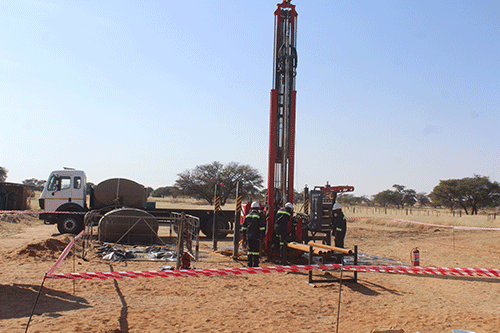In an emotional and tense meeting on Tuesday, words such as “leave our resources alone and go explore in your own countries” came out loudly from disturbed community members who are concerned with uranium exploration activities in Omaheke region.
Uranium One Group, a Russian company, is standing by its statement that all chemicals being used in its exploration activities are environmentally friendly, compared to conventional open-pit and underground mining; thus, farmers in the area should not be worried.
Uranium One is a Russian State-owned entity, known for uranium exploration, mining and processing.
The company this week held a round table discussion, where they shared environmental impact issues.
The event was attended by Namibian ecologists and leaders of the local communities as well as state authorities for topical issues such as underground water and the agricultural sector impact of uranium mining.
A concerned community member Leon Smith proposed an independent study on the baseline, saying there was a lack of engagement with community members in the communal areas: “Stop whatever you are doing and start from scratch. Let us enjoy our freshwater”.
Representatives from key ministries were not present at the meeting to give answers to the angered community members.
However, Uranium One spokesperson Riaan van Rooyen confirmed they forwarded invitations to relevant stakeholders.
Cliff Karuaihe, on behalf of Ovaherero Traditional Authority for Aminius, said they are fully against this exploration in their area.
He mentioned they were previously deceived and were not told that the mining will touch their underground water.
“At this stand, we are not supporting these activities in the region. They should just leave us alone,” he said.
In July 2022, the Stampriet Aquifer Uranium Mining Committee (SAUM), representing the interests of inhabitants of south-east Namibia in the Omaheke region, were concerned with the proposed uranium extraction methods that could potentially harm an aquifer that supplies the only fresh drinking water in the area.
In the statement, members of the SAUM expressed fears that the groundwater could be polluted by uranium, radioactive decay products of uranium and heavy metals if in-situ leaching is to be utilised.
This extraction method has been proposed for two uranium ore bodies, with associated heavy metals discovered in the main and strongest artesian aquifer.
According to SAUM, this aquifer contains top-quality drinking water.
SAUM is a committee of concerned farmers, geologists, lodge owners and other stakeholders in the area who are against the ongoing exploration and planned to mine.
SAUM noted the aquifer water is also pumped by NamWater to supply the communities of Leonardville, Aranos, Aminius, Onderombapa, Derm, Stampriet, Gochas and Koes with drinking water.
The committee last week warned the future of all inhabitants of the Stampriet Artesian Basin (SAB) is in jeopardy.
This, he stated, is because mining operations could poison the freshwater source within these more than 63 000 square kilometres.
Uranium One proposed the in-situ leaching (ISL) method to extract uranium in Namibia.
ISL, also called in-situ recovery (ISR) or solution mining, is a mining process used to recover minerals such as copper and uranium through boreholes drilled into a deposit.
Other officials, such as Omaheke governor Pijoo Nganate and deputy minister of mines and energy Kornelia Shilunga, gave their go-ahead, saying the project is of great importance to the country.
During this week’s presentation, geologist Roy Miller made it clear this is a no-go area for Namibia.
He mentioned that after his research, groundwater is the only source of drinking water in the SAB.
“The SAB economy depends almost totally on agriculture, and agriculture is the largest employer in rural areas. If groundwater becomes contaminated, we will be staring at a long-term disaster,” stated Miller.
He further listed in-situ leaching problems, saying the method releases high-grade uranium into the water, releases the radioactive decay products of the uranium, dissolves heavy metals releasing them into the water and adding sulphate to the water.
Miller noted many problems are underground, where nobody can see them:
“One cannot see, taste, feel or smell natural radioactivity. It causes cancer; people are petrified of radioactivity. This is slow-acting but deadly poison”.
Miller said pumping by irrigation, will increase the rate of natural flow through and away from the mine site; therefore, contamination can and will extend beyond the mine site.
He added groundwater is a critical and permanent commodity in the SAB and must be protected for present and future generations.
“Development of uranium in any drinking water aquifer must be prevented. Cancel all mineral exploration licenses in the SAB; prevent any mining in the SAB. Cancel all exploration drilling permits in the SAB. The public must help government to achieve these aims,” he advised.
Uranium One operates six in-situ recovery mines in Kazakhstan, which has a total yearly uranium production of 10 000 tonnes.
The 25-year Namibian project is anticipated to be of the same scale as one of the mines in Kazakhstan.
So far, four exploration rigs have been set up in the Omaheke region.
Once it starts mining, the company said it could invest between US$300 million to US$500 million over 25 years.
– mndjavera@nepc.com.na


